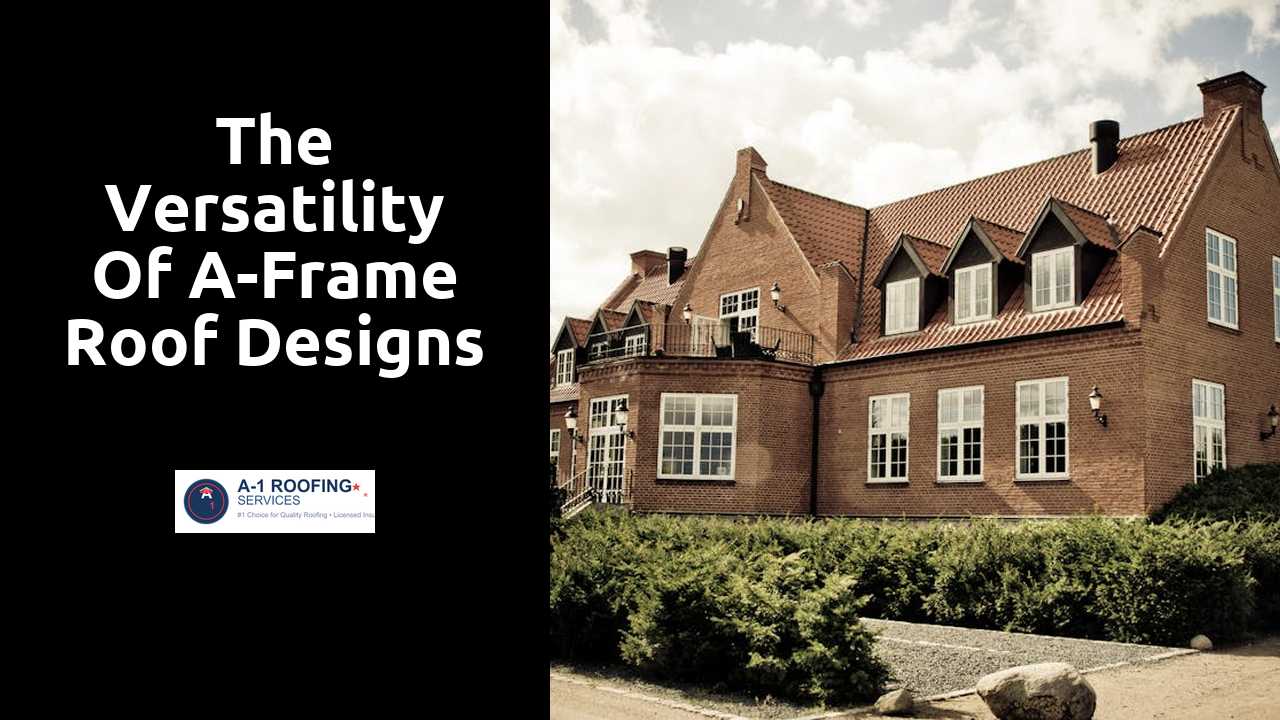
The Versatility of A-Frame Roof Designs
Table Of Contents
Aesthetic Appeal of A-Frame Designs
The unique silhouette of A-frame roofs contributes significantly to their aesthetic charm. This design creates a striking visual impact, allowing structures to blend seamlessly with a variety of landscapes, from serene mountain settings to urban neighborhoods. The architectural form evokes a sense of adventure, reminiscent of cabin retreats and rustic lodges while catering to contemporary tastes. The steep angles and open interiors also lead to creatively designed living spaces that are both functional and inviting.
Incorporating large windows and expansive decks enhances the visual appeal of A-frame structures. These features maximize natural light and frame picturesque views, allowing homeowners to connect more closely with their surrounding environment. The choice of materials further influences the aesthetic, with options ranging from warm wood finishes to sleek metal siding. This versatility enables designs to reflect personal style while maintaining the inherent beauty of the A-frame design.
Navigate to this website to learn more.
Modern and Traditional Style Integrations
A-Frame roofs have the remarkable ability to blend seamlessly with both modern and traditional architectural styles. In contemporary settings, they often feature sleek lines and minimalistic designs, integrating large windows that emphasize a connection with nature. These modern iterations may use materials like glass and metal, providing an updated look while still preserving the classic A-Frame silhouette. Similarly, traditional designs embrace rustic charm through the use of wood and stone, creating a cozy and inviting atmosphere. This versatility allows architects and homeowners to adapt the A-Frame roof to various aesthetic preferences while maintaining its iconic shape.
The appeal of an A-Frame design lies in its adaptability to regional influences and cultural heritage. In mountainous areas, these structures often mirror the natural landscapes, using local materials to enhance their integration into the environment. Coastal interpretations might incorporate lighter colors and breezy elements, reflecting a more casual, beach-like vibe. Historical influences can also be seen, with elements such as wooden beams and stonework paying homage to traditional craftsmanship. The A-Frame’s design transcends stylistic boundaries, making it a popular choice for various home styles that cater to the diverse tastes of homeowners.
Energy Efficiency of A-Frame Roofs
The design of A-frame roofs inherently promotes energy efficiency through its unique angle and structure. This steep slope allows for optimal snow runoff, preventing the accumulation that can lead to increased weight on the roof and potential leaks. By naturally shedding precipitation, A-frames help maintain the integrity of insulation, ensuring that the internal climate remains stable. The triangular shape also enhances airflow, which can assist in maintaining cooler temperatures during hotter months.
Additionally, the materials used in A-frame roofs play a crucial role in their energy-saving capabilities. Many modern versions incorporate advanced insulation materials that provide superior thermal resistance. Properly insulated A-frames can retain heat during winter while keeping the interior comfortable in the summer, reducing the need for artificial heating and cooling. This not only lowers energy bills but also contributes to a sustainable living environment.
Enhancing Natural Cooling and Heating
The design of A-frame roofs contributes significantly to natural heating and cooling within the home. The steep angles of the roof allow for effective heat release during warmer months. This design also promotes airflow, creating a natural ventilation system. In colder climates, the unique shape aids in snow and ice runoff, preventing excess buildup that can create added stress on the structure.
Moreover, the materials chosen for A-frame roofs often enhance their thermal performance. Proper insulation within the sloped sections helps maintain a consistent indoor temperature, regardless of the weather outside. The incorporation of large windows is common, allowing for increased sunlight during the day, which can warm the interior naturally. This balance of design and materials supports a more comfortable living environment while reducing reliance on artificial heating and cooling methods.
Materials Commonly Used for A-Frame Roofs
A-Frame roofs often utilize a range of materials, each contributing unique benefits. Wood is a traditional choice, bringing warmth and a natural aesthetic to the structure. It is also lightweight, making it easier to work with during construction. Cedar and pine are popular types due to their durability and resistance to weather elements. However, wood requires regular maintenance to prevent rotting and insect damage, making it essential to choose the right type and treatment.
Metal has gained popularity for its robustness and longevity. Steel and aluminum roofing options provide excellent weather resistance, which is crucial for A-Frame designs in harsh climates. These materials can also be designed in various finishes and colors, enhancing the aesthetic appeal of the home. Additionally, there are eco-friendly alternatives, such as recycled materials and sustainable wood options, that cater to environmentally conscious homeowners while maintaining the structural integrity and style of A-Frame roofs.
Wood, Metal, and Other Material Choices
Wood remains one of the most popular materials for A-frame roofs due to its natural aesthetic and excellent insulation properties. Cedar, pine, and fir are commonly used choices. These woods not only add character but also provide durability when properly maintained. The warm tones and grain patterns enhance the overall appearance of the structure. Additionally, wood can be treated to withstand harsh weather conditions, making it an appealing option for various climates.
Metal roofing is increasingly favored for its longevity and low maintenance requirements. Aluminum and steel are typical selections, offering durability against extreme weather and pests. These materials can reflect sunlight effectively, contributing to energy efficiency in summer months. Furthermore, metal roofs can come in a variety of colors and finishes, allowing homeowners to customize their A-frame designs without sacrificing functionality. Other innovative materials, such as composite roofing, are also emerging, expanding the options available to architects and builders.
Related Links
Evaluating the Functionality of Dome Roofs in Residential ProjectsUnderstanding the Characteristics of Hip Roofs